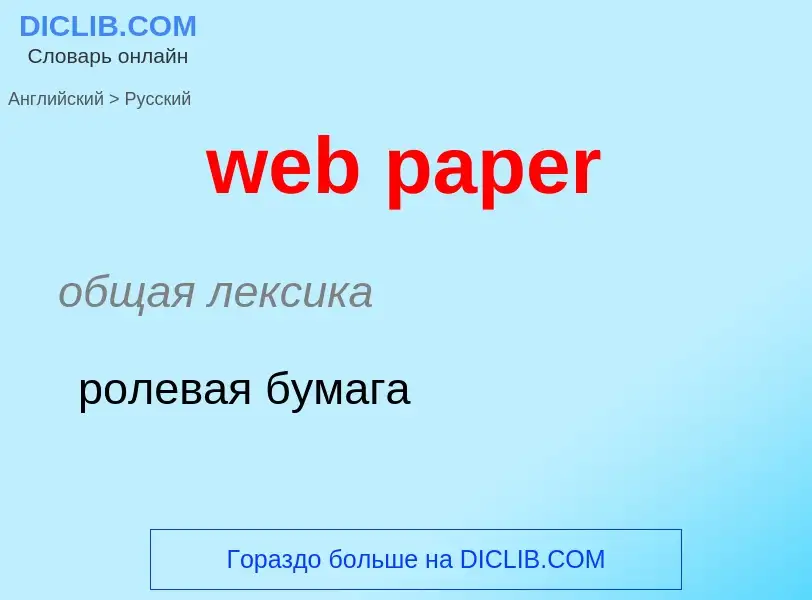Перевод и анализ слов искусственным интеллектом ChatGPT
На этой странице Вы можете получить подробный анализ слова или словосочетания, произведенный с помощью лучшей на сегодняшний день технологии искусственного интеллекта:
- как употребляется слово
- частота употребления
- используется оно чаще в устной или письменной речи
- варианты перевода слова
- примеры употребления (несколько фраз с переводом)
- этимология
web paper - перевод на русский
общая лексика
ролевая бумага
общая лексика
использующий Интернет-технологии, базирующийся на Интернет-технологиях
web-based application
Определение
Википедия
The recycling of paper is the process by which waste paper is turned into new paper products. It has a number of important benefits: It saves waste paper from occupying homes of people and producing methane as it breaks down. Because paper fibre contains carbon (originally absorbed by the tree from which it was produced), recycling keeps the carbon locked up for longer and out of the atmosphere. Around two-thirds of all paper products in the US are now recovered and recycled, although it does not all become new paper. After repeated processing the fibres become too short for the production of new paper, which is why virgin fibre (from sustainably farmed trees) is frequently added to the pulp recipe.
There are three categories of paper that can be used as feedstocks for making recycled paper: mill broke, pre-consumer waste, and post-consumer waste. Mill broke is paper trimmings and other paper scrap from the manufacture of paper, and is recycled in a paper mill. Pre-consumer waste is a material which left the paper mill but was discarded before it was ready for consumer use. Post-consumer waste is material discarded after consumer use, such as old corrugated containers (OCC), old magazines, and newspapers. Paper suitable for recycling is called "scrap paper", often used to produce moulded pulp packaging. The industrial process of removing printing ink from paper fibres of recycled paper to make deinked pulp is called deinking, an invention of the German jurist Justus Claproth.


![Varaasi]] Varaasi]]](https://commons.wikimedia.org/wiki/Special:FilePath/India - Varanasi paper bag maker - 0078.jpg?width=200)
![Atlanta, Georgia]] Atlanta, Georgia]]](https://commons.wikimedia.org/wiki/Special:FilePath/Make a difference, understanding Pendleton's recycling program DVIDS536228.jpg?width=200)


